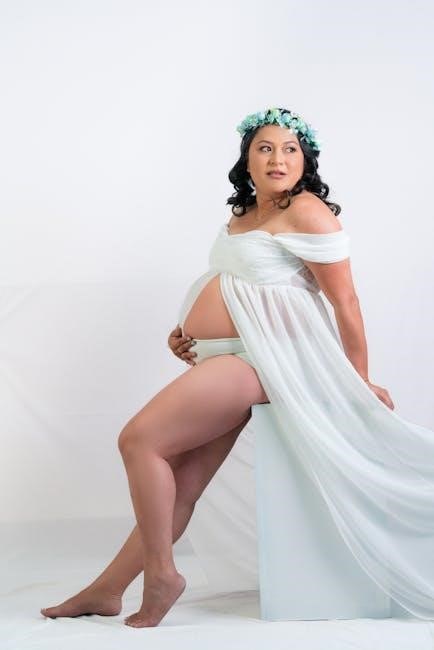Hot Tub Instruction Manual: A Comprehensive Guide
Welcome to the comprehensive guide to understanding your hot tub! This manual is designed to provide you with all the information necessary to safely and effectively operate and maintain your spa. From initial setup to troubleshooting, we’ve got you covered. Dive in and enjoy a relaxing experience!
Understanding Your Hot Tub Model
Before diving into the specifics of operation, it’s crucial to familiarize yourself with your hot tub’s particular model. This section will guide you through the essential aspects that differentiate one model from another. Start by locating the model number, typically found on a sticker near the control panel or on the spa’s exterior. This number will be vital when referencing specific instructions or ordering replacement parts.
Next, understand the unique features of your hot tub. Does it have advanced jet systems, specialized lighting, or a built-in sound system? Each feature will have its own set of controls and maintenance requirements. Pay close attention to the jet configuration, as different jets target specific muscle groups for a customized massage experience. Familiarize yourself with the filter system; its location and type are crucial for proper water maintenance.
Also, note the capacity of your hot tub. Knowing how many gallons it holds will assist you in calculating the correct amount of chemicals to add. Finally, review the electrical requirements of your model to ensure it’s properly connected to a compatible power source. Understanding these model-specific details is the first step to a long-lasting and enjoyable hot tub ownership experience.
Safety Precautions
Prioritizing safety is paramount when enjoying your hot tub. Begin by understanding the risks associated with hot water immersion. Prolonged exposure can lead to hyperthermia, causing drowsiness, dizziness, and even unconsciousness. Limit soak times, especially for children, pregnant women, and individuals with medical conditions. Consult your physician if you have concerns.
Never use the hot tub while under the influence of alcohol or drugs, as these substances can impair judgment and increase the risk of accidents. Ensure the water temperature is set to a safe level, ideally between 100°F and 104°F. Regularly check the temperature with a reliable thermometer.
Prevent unsupervised access to the hot tub, especially by children. Install a locking cover that meets safety standards to prevent accidental drowning. Keep electrical devices away from the hot tub to avoid electrocution hazards. Ensure proper grounding of the hot tub’s electrical system. Finally, be aware of slip-and-fall hazards around the hot tub area. Keep the surrounding surface dry and free of obstacles. By following these precautions, you can create a safe and relaxing hot tub environment for everyone.
Initial Setup and Filling
Proper initial setup is crucial for the longevity and enjoyment of your hot tub. First, choose a suitable location that is level, stable, and can support the filled weight of the spa. Ensure the location has adequate drainage and is protected from harsh weather conditions. Once the location is prepared, carefully position the hot tub according to the manufacturer’s instructions.
Before filling, inspect the hot tub for any damage that may have occurred during shipping. Connect the plumbing and electrical components as specified in the manual. Once connections are secure, you can begin filling the hot tub with water. Use a garden hose and fill through the filter compartment to prevent airlocks in the plumbing system.
As the hot tub fills, monitor the water level and check for leaks. Once the water reaches the recommended level, turn on the power and allow the hot tub to heat up. This process may take several hours, so be patient. After the water has reached the desired temperature, add the appropriate chemicals to balance the water chemistry. Regularly test and adjust the water to maintain a clean and healthy spa environment.
Water Chemistry and Maintenance
Maintaining proper water chemistry is essential for a clean, safe, and enjoyable hot tub experience. Regular testing and adjustment of the water’s pH, alkalinity, and sanitizer levels are crucial to prevent the growth of bacteria and algae. Use a reliable test kit or strips to check these levels at least twice a week, or more frequently if the hot tub is used heavily.
The ideal pH range for hot tub water is between 7.2 and 7.8. If the pH is too low, add a pH increaser to raise it. If the pH is too high, add a pH decreaser to lower it. Alkalinity should be maintained between 80 and 120 ppm. Adjust alkalinity before adjusting pH, as it can affect pH levels.
Sanitizers, such as chlorine or bromine, are used to kill bacteria and keep the water clean. Follow the manufacturer’s instructions for adding sanitizer to the hot tub. Shocking the water regularly, typically once a week, helps to eliminate contaminants and maintain water clarity. In addition to chemical maintenance, regularly clean or replace the hot tub’s filter to remove debris and impurities. Proper water chemistry and maintenance will ensure a healthy and inviting hot tub environment for you and your guests.
Operating the Control Panel
The control panel is your central interface for managing all of your hot tub’s functions. Familiarize yourself with the layout and buttons before your first use. Typically, you’ll find controls for power, temperature adjustment, jet activation, lighting, and possibly additional features like audio systems or water features. The power button will turn the entire system on and off.
Temperature can be adjusted up or down using dedicated buttons, usually displayed in degrees Fahrenheit or Celsius. Be mindful of the recommended temperature range for safe and comfortable use. Jet controls allow you to activate and adjust the intensity of the various jets in the hot tub, providing a customized massage experience. Lighting controls enable you to set the ambiance with different colors or brightness levels.
Some control panels may also include a display screen that shows the current water temperature, settings, and any error messages. Refer to your specific model’s manual for detailed instructions on navigating the control panel and utilizing all available features. Understanding and operating the control panel effectively will allow you to fully enjoy and customize your hot tub experience.
Troubleshooting Common Issues
Even with proper care, hot tubs can experience occasional issues. One common problem is cloudy water, which can be caused by poor water chemistry or inadequate filtration. Check and adjust your pH and sanitizer levels, and ensure your filter is clean. Another issue is jets not working, which might be due to clogged nozzles or a malfunctioning pump.
Inspect the jets for debris and clean them as needed. If the pump isn’t working, check the power supply and consult a technician if necessary; Overheating or underheating can also occur. Verify that the temperature settings are correct and that the heater is functioning properly. If the water won’t heat, check the heater element and thermostat.
Error messages on the control panel can provide valuable clues about the problem. Refer to your manual for a list of error codes and their corresponding solutions. If you’re unable to resolve the issue yourself, contact a qualified hot tub technician for assistance. Regular maintenance and prompt attention to problems can prevent minor issues from escalating into major repairs.
Draining and Cleaning Your Hot Tub
Regular draining and cleaning are essential for maintaining a clean and healthy hot tub environment. Before draining, disconnect the power supply to ensure safety. Locate the drain valve, which is typically at the bottom of the hot tub. Attach a garden hose to the valve and direct the water to a suitable drainage area, away from sensitive landscaping or structures.
Once the hot tub is empty, use a soft cloth or sponge and a mild detergent specifically designed for hot tubs to clean the interior surfaces. Avoid using abrasive cleaners or harsh chemicals, as they can damage the acrylic shell. Pay particular attention to areas prone to biofilm buildup, such as around jets and along the waterline. Rinse thoroughly with fresh water to remove any soap residue.
Inspect the jets and clean them if necessary. Reassemble any components that were removed during cleaning. Once the hot tub is clean and dry, you can refill it with fresh water and re-establish the proper water chemistry. Regular draining and cleaning, typically every three to four months, will help prevent the buildup of contaminants and prolong the life of your hot tub.
Winterizing Your Hot Tub
When cold weather arrives, proper winterization is essential to prevent freeze damage to your hot tub; Begin by draining all the water from the hot tub, following the draining procedure. Use a wet/dry vacuum to remove any remaining water from the jets, plumbing lines, and equipment compartment. This step is crucial to prevent water from freezing and expanding, which can crack pipes and damage components.
Remove and clean the filter, storing it in a dry place. Disconnect all unions on the equipment, such as the pump and heater, to allow any trapped water to escape. Leave these unions loose to prevent pressure buildup if any residual water freezes. If possible, use an RV antifreeze specifically designed for plumbing systems to protect the pipes. Pour the antifreeze into the jet lines and plumbing fittings.
Cover the hot tub with a well-fitting, insulated cover to protect it from the elements. Secure the cover tightly to prevent snow and ice from accumulating inside; Periodically check the hot tub throughout the winter to ensure the cover remains secure and there are no signs of damage. By taking these steps, you can protect your hot tub from the harsh winter conditions and ensure it is ready for use when warmer weather returns.



Leave a Reply
You must be logged in to post a comment.